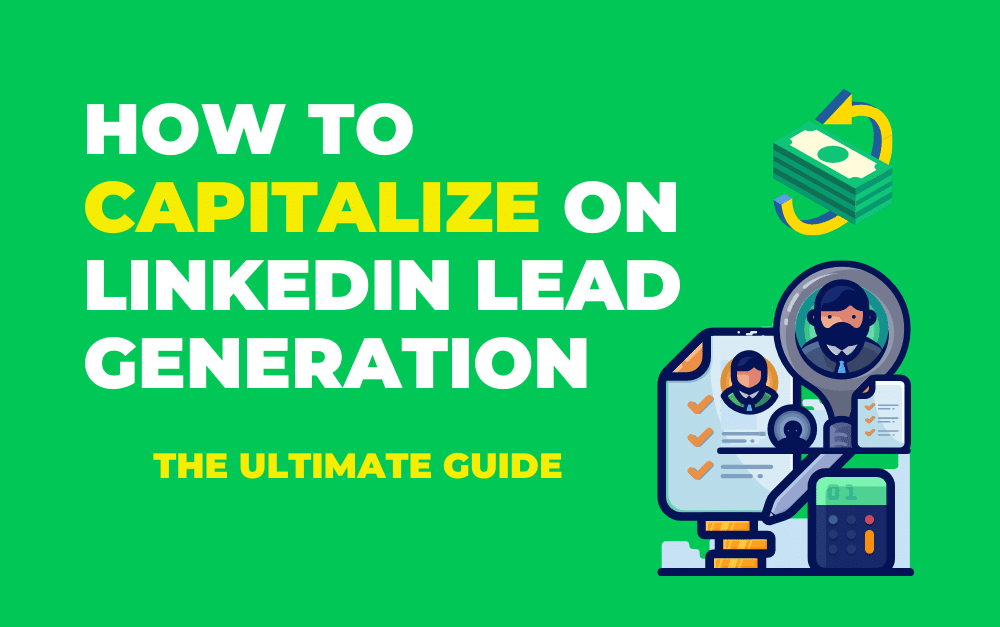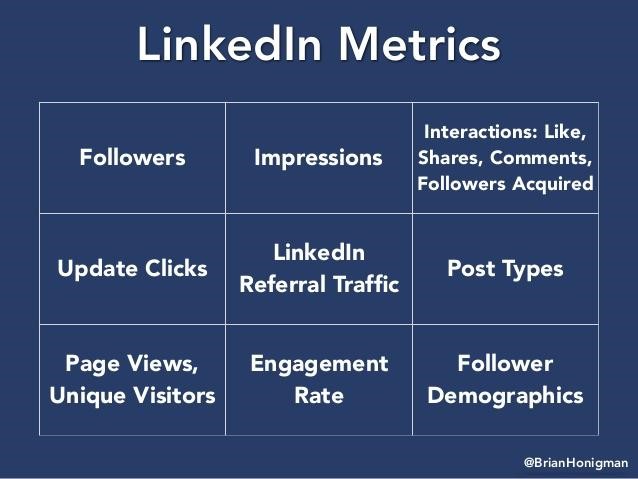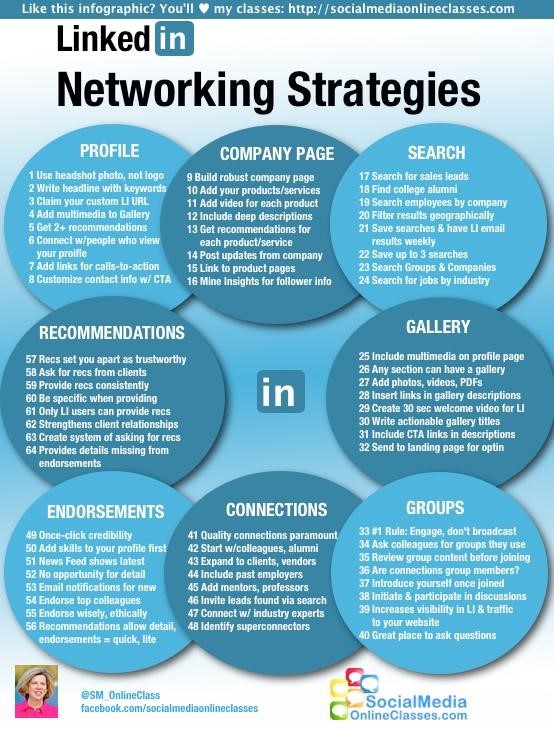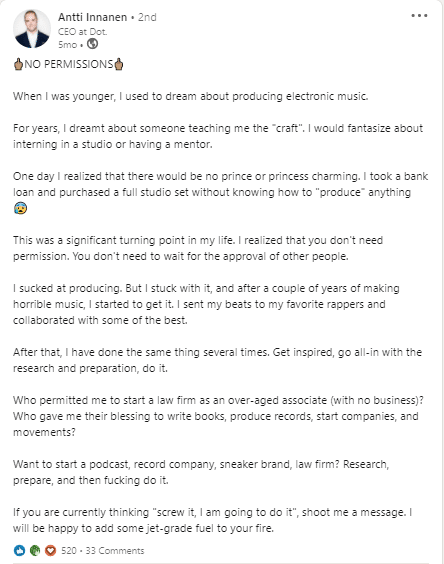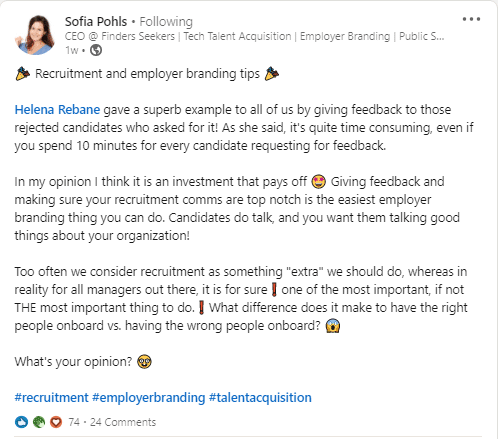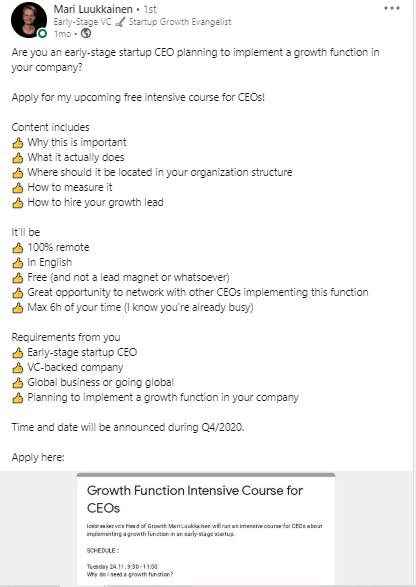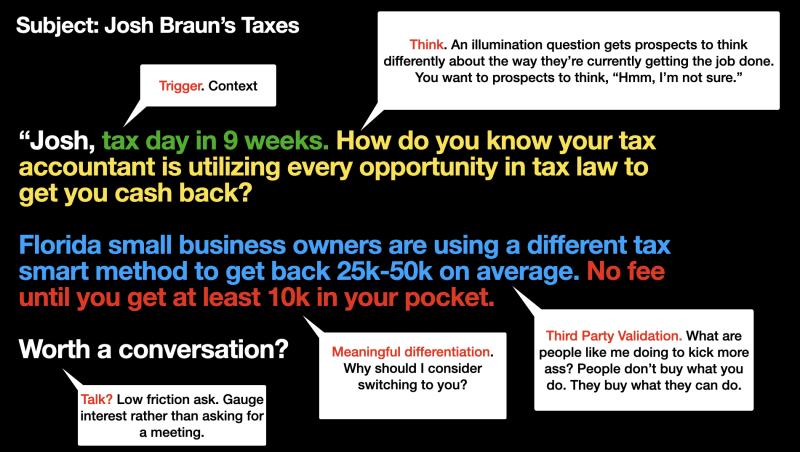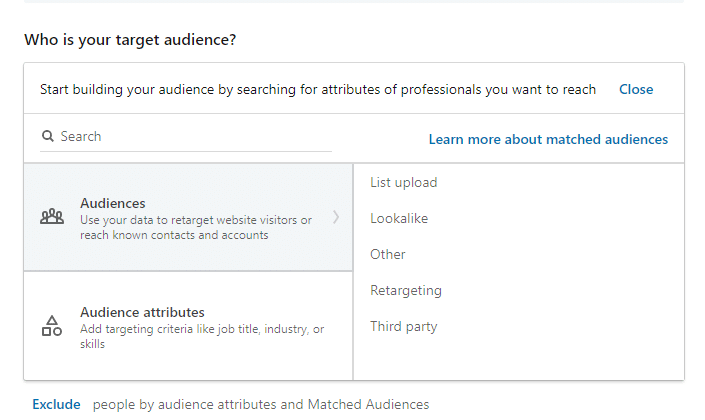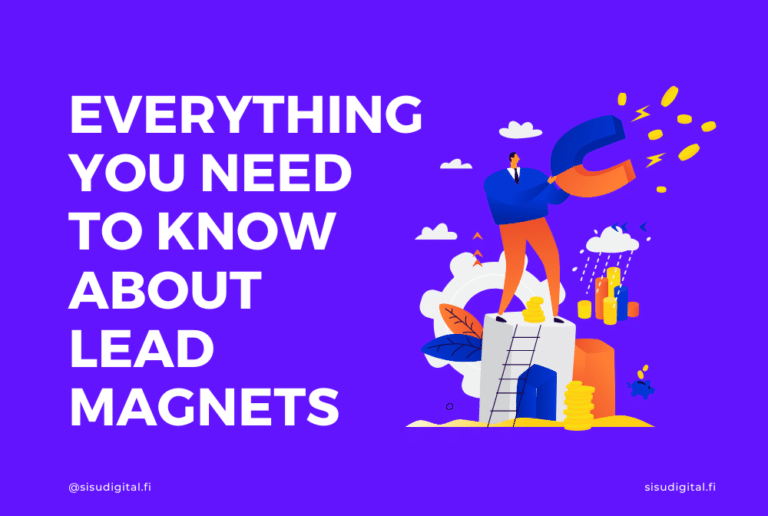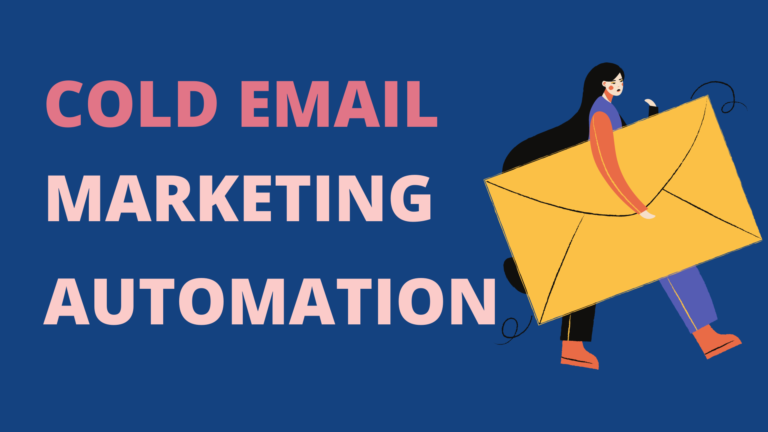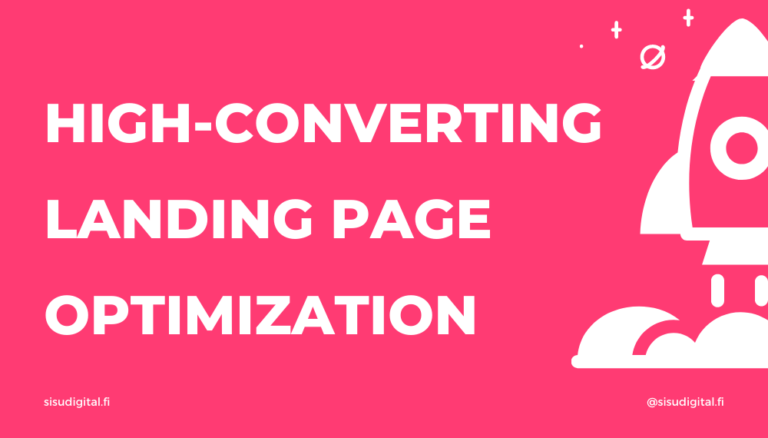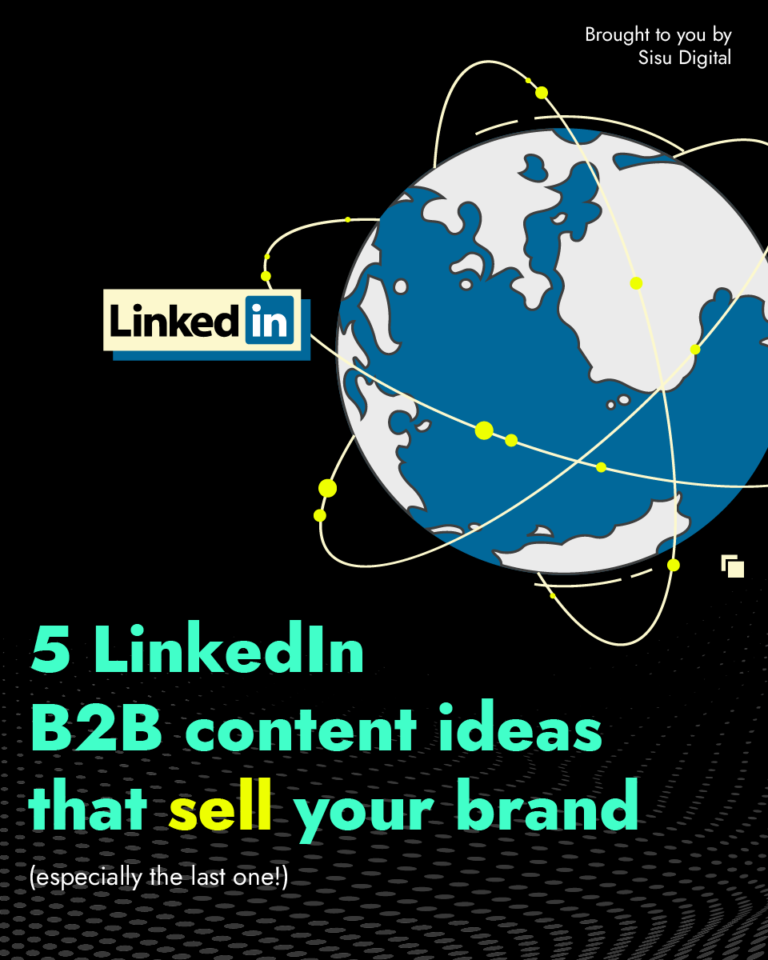LinkedIn lead generation is not only limited to paid ads and cold email outreach, we’re here to show you all.
We’ll go from the basics: understanding your goals, how the LinkedIn algorithm works, and how to best optimize your profile. After that, we’ll guide you on how to build a content marketing strategy that will amplify your personal brand and company brand.
Finally, the more advanced stuff like setting up your ad and high-performing outreach campaigns. We’ll show you how to capitalize on lead generation using LinkedIn.
Time to accelerate your LinkedIn game.
1. Define your goals
The lead generation process is a long game. Your goal is, of course, to generate leads and sell but slapping a sales pitch on your audience right from the start is counter-productive.
Since you’re in the long game, you need to keep track of your goals. Set milestones and KPIs on what you would like to achieve and how you’re going to achieve them are the best ways to keep yourself focused.
This step has a substantial impact for when you decide who you want to connect and what kind of content that you want to create.
2. Optimize your LinkedIn profile
The lead generation process starts with building your own personal brand. Because having a well-build individual profile increases your professionalism, reliability, and credibility. When you are an employee or business owner of a company, especially when you work in sales or marketing, you are the face of the company and should uphold a proper representation of the brand.
An all-star profile should have:
The basic stuff: a professional profile photo, fill in the about section, work experience, projects, skills, and certificates.
Add testimonials or recommendations from your former employers or clients.
Turn off the “People also viewed” section on your profile to keep the focus on you! (Settings & Privacy – Site Preferences)
SEO-optimized your profile with relevant keywords on your headline, about section, experience, and all of your content.
Find people within the professional circle that you want to be in and connect with them. Also, reach out to your former classmates or colleagues.
Search and connect with your prospects – If you have access to LinkedIn Sales Navigator, take advantage of the Advanced Search, which gives you 30 different filter categories to refine your search and find the ideal leads. The tool also allows you to save lead searches, account searches and share them with your colleagues.
Like the infographic? Read the full optimization strategy.
3. Engage
Once you have reached out to your colleagues, clients, prospects, and make new connections, it’s time to nurture them. By actively engaging with your connections, you increase your chance of getting profile views, receive more invitations to connect and stand out from other people who have a profile on LinkedIn but do nothing about it.
3.1 Join industry groups
Join industry groups where your connections gather. If you think LinkedIn groups are no longer relevant to your marketing strategies, perhaps you’re not looking at the right ones.
Don’t look for groups with the biggest size, but those with the highest level of activity. If you find people engaging in the topic of discussion that fits your business, this is the place you want to be.
Join with your individual account, not your company page. Joining with your company account might give the impression that you’re only there to sell. Besides, a face on a profile is always easier to approach.
Speaking of selling, never start a conversation with a sales pitch, not only in LinkedIn groups but on LinkedIn in general. Provide value, build trust and connection, then maybe people might be willing to listen to your pitch.
Establish your expertise and group presence by frequently answering questions, posting relevant content, and initiate discussions. It is also a perfect place to conduct market research.
The safest conversation starters include industry trends, educational or operational issues that people can relate to within their work life.
3.2 Engage with your connections
React, comment, and share their posts. It is especially important that you take actions on key dates that are essential to your company and the companies of your connections. For example, product launches, upcoming events or webinars, a celebration of a meaningful milestone, etc.
Write your own posts: use LinkedIn to find out what topics are trending, what subjects your connections might be interested in, and what gives them value for being a connection with you. Find out more on how to do organic content on Step 4.
Advocate LinkedIn to your entire company. Imagine the number of leads and opportunities it will bring if the whole company takes part in brand building on LinkedIn.
4. Build your content strategies
Don’t think that content has nothing to do with your LinkedIn lead generation strategy. People who share content on LinkedIn at least once per week are 10x more likely to be approached for new opportunities than those who don’t.
The best way to nurture your audience relationship is by bringing authenticity into your content.
Pick a topic that you are interested in and have experience in. It is better to go niche than trying to appeal to everyone with broad topics. You want to attract a certain type of connection that is part of the professional circle that you want to be in. If you are not the go-to person for a certain type of topic, your brand is not very strong yet.
Start small and start with something you know best. By starting small, you don’t put pressure on yourself and have the energy to go for the long run. You’re also free to let your creativity fly and test the water as much as you’d like.
4.1 Have an active, curiosity-inducing post title.
The great thing about LinkedIn is that every time you post something, your content gets shared with everyone who’s in your network. But only the post title is seen in the notification, so make sure it can capture your audience right away.
Top-performing titles include “how-to”, “lists”, “tips”, or “hacks”. Breaking news or industry trends also perform well but make sure you share them when they’re still fresh.
4.2 All-text content on the rise
These days, people crave conversations. All-text content provides insights, stories, and triggers people’s interests. If you visit LinkedIn recently, you’ll notice right away that most seasoned users share their content using the text-only format.
Try these high-performing all-text content:
A personal experience in a professional context: People like stories because they are easy to relate to. It’s also interesting to them if they gain knowledge or inspiration from your story. Topics for this can be job-seeking experience, an incident in your working life, a mistake you made and learn from, etc.
Antti’s example below speaks very clearly of his straightforward and “no-bullshit” personality. That’s his brand and people who like to work with him can see right away what they will get out of it. Through his personal experience, he inspired people to just go for the job they want, and also offer his help at the end.
Thought leadership: Share advice, quick tips, or newfound insights about a topic of your expertise. When people trust your brand authority, your LinkedIn lead generation efforts will become easier.
Sofia’s example below gathers a lot of engagement. She’s a CEO of an HR company and through her post, she shows her connections and many possible prospects that her company offers great services to their clients and establishes a positive brand image.
Offer something of value for free: sharing a job opportunity, offering a free consultation, helping someone review their resume, etc. (make sure these also align with your lead generation goals).
Mari’s example below is extremely smart. By offering startup CEOs a free course on how to implement a growth function and why growth hacking is important, the next time these CEOs look to fill in this position, who will they talk to first? Mari of course!

LinkedIn lead generation: free offer
Genuine employer branding content: People love to see the human side of a company, ideas for this type of content can be a new employee introduction, a look into the working culture, team-building activity, etc.
This works especially well for starting companies when all of the employees mentioned in your post are tagged because it will help your post reach their network as well.
➼ Collective sharing: very rarely can you find employees collectively communicate the company’s value and share their news via LinkedIn.
Check out the prime example of Finders Seekers’ s “#seekersinsights”, where every employee has picked the same date to share the news of their company’s latest newsletter. Great use of hashtag as well, because on that day, anyone who has a connection with Finders Seekers got their LinkedIn flooded with this news!
To know what kind of content is suitable for your LinkedIn lead generation activities, check out the Top 10 LinkedIn statistics every marketer should know in 2021
4.3 LinkedIn Algorithm
What’s the difference between a viral post and a post with only a couple of likes?
You need to understand the 4 stages of this “Man + Machine” approach that LinkedIn has your content go through.
- LinkedIn classifiers label your content as “spam,” “low-quality,” or “clear”, as soon as you made the post..
- LinkedIn virality predictors monitor your network reach and evaluate the initial post reactions from your connections.
- Depending on your network’s initial reactions, the LinkedIn algorithm will decide whether to demote your content due to low quality, or spread it to more people because it’s high quality.
- LinkedIn’s editors will review your content personally to see if it’s worth promoting to people outside your network.
LinkedIn favors content without links because they don’t want users to go away from their platform. If you have links to share, put them in the first comment. As your content gathers discussions, attach the link back to your post so that it doesn’t get lost among the comments.
Consistency is the secret. Besides consistent posting, your reactions to other people’s content will keep your profile visible on their newsfeed. That’s how you keep yourself “on top of mind”.
5. LinkedIn Outreach
If you’re serious about LinkedIn lead generation, invest in InMail. This is what people use to directly send a message to their target customers without connecting with them first. Of course, we usually recommend companies warm up their leads by connecting first. But if you’re in a rush and have InMail to spare, then go ahead.
InMail is essentially a cold email. When it comes to writing high-performing cold emails, we would like to introduce Josh Braun and his amazing 4T model. Josh is a true sales master that will help you brush up on your cold emails and book more meetings.
Trigger: use a trigger event to initiate the conversation. For example, look into your prospect LinkedIn to see what’s he talking about, comment on a challenge he’s having, or give a compliment for his latest achievement.
Teach/Think: Ask a question that makes your prospect think differently about how they’re getting the job done. Support it with visual aids or examples (testimonials, case studies, before and after photos, etc.).
Third-party Credibility: mention customers with a similar problem and how you have helped them solve it.
Talk?: calls to action. Josh encourages CTAs that don’t put too much pressure on the prospects. For example, CTAs that demand 15-minute or an hour of their precious time. Go for interest and instead of pressure (would you like to learn more about…., worth a conversation?)
The best thing about this method is that Josh doesn’t want you to focus on the “I”. Cold emails or any type of copywriting should focus on the customers – the “you”.
Your email should be limited to 65 words and have more “I” than “you” in it.
Make your prospect feel like this email was sent specifically to him instead of other prospects.
Wanna learn more about copywriting? Read our beginner’s guide to copywriting: how to create powerful marketing copy.
We also recommend using these tools for your Outreach strategies: LinkedIn Sales Navigator, Phantombuster, and Dux-Soup. Read more about these tools here.
6. Run ad campaigns
What we’ve learned so far was mostly lead generation on an individual level. That’s good, you build trust better when you’re on a personal level with your audience.
But running ad campaigns will help you spread your company’s message to the right people even further. However, this process takes trials and errors before you find a suitable strategy for your company.
6.1 Targeting
The superiority of LinkedIn advertising lies upon its first-rate targeting options.
Compared to targeting using other social media channels, LinkedIn takes the advantage of receiving a full profile of a person’s professional experience.
It allows you to target on three different levels: company targeting (reach key companies and decision-makers), contact targeting (advertise to prospects or known contact), and website retargeting.
Take advantage of audience insights your company got from:
Google Analytics: audiences
LinkedIn Pixels: website demographics
Internal research: persona, customer journey, user touchpoints, etc.
Understand who you are trying to reach: end-user, decision-maker, or influencer? Keep your reach under control.
LinkedIn recommends a target audience of over 50,000 for Sponsored Content and Text Ads, and over 15,000 for Message Ads.
A/B tests your audience. Duplicate your campaign, and slightly adjust the targeting options. Change only a few criteria at a time, so you know which one impacts your campaign’s performance.
6.2 Types of ads
Use different types of ads and content depending on what stage your prospects are in the sales process.
Awareness: use the Lead Gen Form along with an educational offering, for example, an industry report, whitepaper, or newsletter (about a specific topic). Find out what your audience likes. This is a quick way to gain contact information, your prospects also gain free resources without making too much commitment.
You should manage your content so that through this stage, your prospects realize a need that they have or a pain point that your products or services can solve.
Consideration: once you have captured your prospect’s attention, it’s time to peak their interests. Offer free trial, invite them to a webinar or event through a Conversations ad, InMail or Message ad. Be personal when drafting your message, and don’t ask for too much. Your CTA should be simple, with the goal of website conversions or redirecting your prospects to the next desirable steps.
You can also promote Sponsored Content that gives relevant updates to your target audience.
Conversion: finally, your long-awaited pitch can be made. Push ads that highlight your business values, make a distinction between you and your competitors and focus on the benefits that your leads will receive.
You can try various ad formats like Text ads, Carousel ads, Dynamic Ads, and Video ads.
Ad Creative: A/B test your creative to see which one works best. You can also set up Dynamics Ads, which serve different ad creative and text depending on your target audience
Allocate Your Budget: LinkedIn recommends a 70/30 split.
70% of your advertising budget for your conversions and lead generation ads, and the rest for building brand awareness or engagement with your content. But then again, it’s all about testing. Try different types of ads and see which one perform the best
6.3 Conversion tracking
Measure your ad performance, see what kind of people are converting and what kind of actions they took, so you can optimize your ads even better. Set up conversion tracking in 3 easy steps:
- Install LinkedIn Insight Tag to your website to gain access to your website demographics and website retargeting.
- Create a conversion action, so when your prospects take a certain action on your website or landing page, LinkedIn knows that it’s a conversion.
- Add the conversion action to your campaign. You can add an unlimited amount of actions.
Don’t have enough time or manpower to get things done? Why not let Sisu Digital help you set it up? We provide B2B lead generation solutions that help your business grow and get more customers.
Subscribe to Sisu Digital for more LinkedIn lead generation tips, digital marketing knowledge, and business insights.
